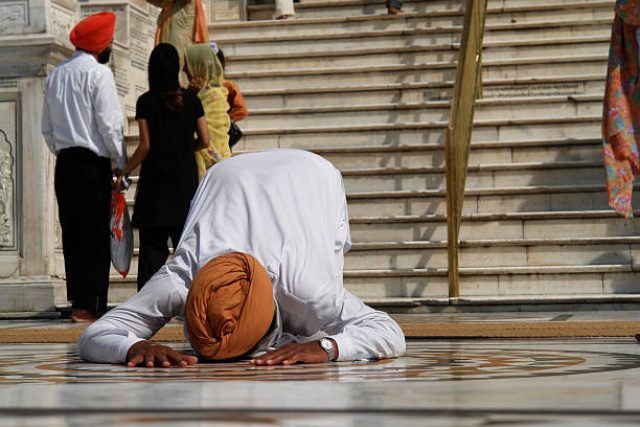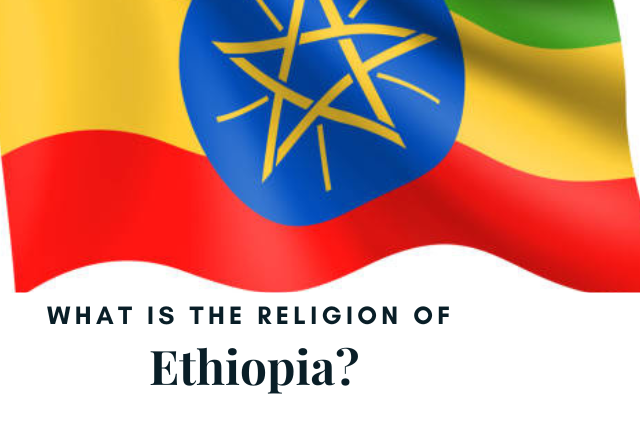What is the Religion of India?

India, a country known for its lively colors, bustling cities, and ancient customs, is also a place of incredible religious variety. It’s a land where people follow various faiths, shaping their lives and communities.
But, what is the religion of India?
In this blog post, I’ll discuss the major religions of India, understand their beliefs, and practices, and how they’ve influenced Indian society.
What is the Religion of India?
India is a very religiously diverse country, but the religion with the most followers is Hinduism. In fact, India is home to about 94% of the world’s Hindus [ Pew Research Center, Key findings about the religious composition of India]. Here’s a breakdown of some of the major religions in India according to the 2011 census:
- Hinduism (79.8%)
- Islam (14.2%)
- Christianity (2.3%)
- Sikhism (1.7%)
- Buddhism (0.7%)
- Jainism (0.4%)
There are also smaller populations of people following other religions such as Zoroastrianism and Judaism.
Hinduism

Hinduism, with a staggering 79.8% of the population adhering to it, forms the bedrock of Indian religion. It’s not just a religion; it’s a way of life encompassing diverse philosophies, traditions, and practices. Unlike many religions with a single founder or scripture, Hinduism is a mosaic of beliefs that have evolved over millennia.
Here are some key aspects of Hinduism:
- Belief in Dharma: Dharma translates to “righteous duty” and forms the core principle guiding Hindus. It encompasses fulfilling one’s duties based on their social status, occupation, and stage in life.
- Karma and Reincarnation: Hindus believe in the law of karma, where actions have consequences. Good deeds lead to good karma and a better rebirth, while bad deeds result in bad karma and a lower rebirth cycle.
- A Multitude of Deities: Hinduism is a polytheistic religion with a vast pantheon of gods and goddesses. Some prominent deities include Brahma (the creator), Vishnu (the preserver), Shiva (the destroyer and regenerator), Saraswati (goddess of knowledge), Lakshmi (goddess of wealth), and Ganesha (remover of obstacles).
- Vedas and Upanishads: The Vedas are ancient scriptures considered the foundation of Hinduism. The Upanishads, philosophical texts within the Vedas, explore the nature of reality and the soul.
- Importance of Pilgrimage: Hindus undertake pilgrimages to sacred places like Varanasi, a city on the Ganges River believed to be a gateway to liberation.
Islam

Islam, the second-largest religion in India with 14.2% of the population, arrived in the 7th century through trade and conquest. It emphasizes the oneness of God (Allah) and the teachings of Prophet Muhammad. Indian Muslims have developed a unique cultural identity, blending Islamic traditions with local customs.
Here are some key aspects of Islam in India:
- Five Pillars of Islam: These are the core practices of Islam, including faith in one God, prayer five times a day, giving charity, fasting during Ramadan, and pilgrimage to Mecca (for those who are able).
- Sufism: A mystical branch of Islam emphasizing love, devotion, and direct experience of the divine. Sufi saints have played a significant role in promoting religious harmony in India.
- Mosques and Festivals: Mosques, like the magnificent Jama Masjid in Delhi, serve as centers for worship and community gatherings. Muslims in India celebrate festivals like Eid al-Fitr and Eid al-Adha with great fervor.
Christianity

Christianity, with 2.3% of the population, has a long history in India, with roots tracing back to the first century AD. Today, Indian Christians come from various denominations, including Catholic, Protestant, and Orthodox traditions.
Here’s a glimpse into Christianity in India:
- Influence on Education and Social Reform: Christian missionaries played a crucial role in establishing educational institutions and advocating for social reforms like abolishing child marriage.
- Local Expressions of Faith: Indian Christians have blended their faith with local customs, creating a unique blend of traditions.
- Christmas Celebrations: Christmas is a major festival for Christians in India, celebrated with joy and fervour.
Sikhism
Sikhism, founded in the 15th century by Guru Nanak Dev, is a monotheistic religion with 1.7% of the population following it. It emphasizes equality, social justice, and serving humanity.

Here are some core tenets of Sikhism:
- One God: Sikhs believe in one God, recognized as “Waheguru.”
- Guru Granth Sahib: The holy scripture of Sikhism, considered the eternal Guru, containing the teachings of the Gurus.
- Five Ks: Sikhs wear five articles of faith – Kesh (uncut hair), Kangha (comb), Kara (steel bracelet), Kachha (underwear), and Kirpan (sword) – that symbolize their commitment to their faith.
- Gurdwaras: Gurdwaras are Sikh places of worship where everyone is welcome, regardless of caste or religion. Langar, a community kitchen, provides free food to all visitors
Buddhism

Buddhism, with 0.7% of the population, originated in India in the 6th century BCE through the teachings of Siddhartha Gautama, who attained enlightenment and became known as the Buddha. Though Buddhism declined in India over time, it continues to leave its mark.
Here’s a look at Buddhism in India:
- Four Noble Truths: These truths form the foundation of Buddhist teachings: 1) Life is suffering, 2) Suffering arises from desires, 3) Suffering can be ended, and 4) The path to ending suffering is the Eightfold Path.
- Eightfold Path: This path outlines ethical conduct, mindfulness, and mental development to achieve liberation from suffering.
- Monasteries: Buddhist monasteries, like the Mahabodhi Temple in Bodh Gaya, served as centers of learning and meditation.
- Dalai Lama: The Dalai Lama, the spiritual leader of Tibetan Buddhism, has a significant following among Indian Buddhists.
Jainism

Jainism, with 0.4% of the population, is an ancient Indian religion founded by Mahavira in the 6th century BCE. It emphasizes non-violence (ahimsa) and achieving liberation through self-discipline and asceticism.
Here are some key aspects of Jainism:
- Three Jewels: Right knowledge, right conduct, and right faith are the three jewels guiding Jains towards liberation.
- Ahimsa: Non-violence is paramount in Jainism, extending to all living beings. Jains practice strict vegetarianism and avoid harming even insects.
- Asceticism and Monasteries: Jain monks and nuns practice strict asceticism, detachment from material possessions, and meditation to achieve spiritual liberation. Jain temples showcase intricate architecture and philosophies.
FAQs About What is the Religion of India
What is the official religion of India?
India does not have an official religion. The Indian constitution respects and protects the freedom of religion for all its citizens. This means that people of all faiths, including Hinduism, Islam, Christianity, Sikhism, Buddhism, and others, have the right to practice their religion freely without any discrimination.
Do Hindus believe in Jesus?
Most Hindus do not believe in Jesus as the son of God. Hinduism predates Christianity by thousands of years and has its own set of prophets, gurus, and deities. However, some Hindus might acknowledge Jesus as a holy figure or teacher.
Do Hindus believe in God?
The concept of God in Hinduism is complex. Unlike some religions with a single God, Hinduism has a vast pantheon of deities representing different aspects of the divine. Hindus might worship a specific deity or recognize a supreme being.
What do Hindus worship?
Hindus worship many deities, including Brahma (the creator), Vishnu (the preserver), Shiva (the destroyer and regenerator), and various goddesses like Lakshmi (wealth) and Saraswati (knowledge). Additionally, some Hindus revere ancestors, nature spirits, and murtis (sacred statues) as representations of the divine.
Can you eat beef as a Hindu?
Many Hindus consider cows sacred due to their role in agriculture and their symbolism in Hinduism. Therefore, they abstain from eating beef. However, dietary practices can vary among Hindus depending on region and caste.
Summing Up
This concludes our exploration of the rich and vibrant religious landscape of India. We’ve seen how different faiths have co-existed, influenced each other, and enriched the cultural tapestry of this incredible nation. As India moves forward, its religious diversity will undoubtedly continue to be a source of strength and inspiration.





